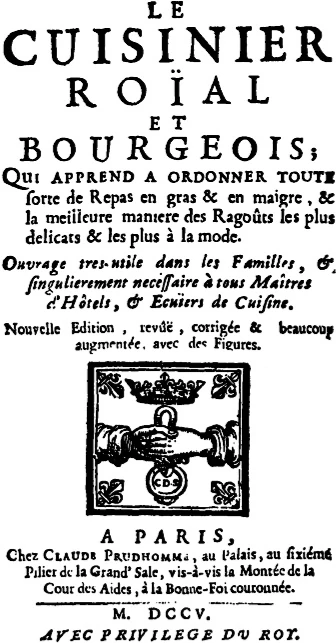Classic Crème Brûlée

My darlings, there's something truly magical about crème brûlée that captures the essence of elegant simplicity. This beloved French dessert features just a handful of ingredients, transformed through careful technique into something truly extraordinary. The contrast between the silky smooth custard and that crackling caramelized sugar top creates a sensory experience that's simply unmatched in the dessert world. I've been making this recipe for over forty years, and the joy of cracking through that amber sugar crust never diminishes!
What makes this particular crème brûlée recipe special is the careful balance of rich creaminess and delicate vanilla flavor. I prefer using a real vanilla bean when I can, as those tiny seeds dotting the custard provide bursts of flavor that vanilla extract simply can't match. Don't be intimidated by its fancy French name or restaurant association - with some patience and attention to detail, you can create this impressive dessert right in your own kitchen. It's perfect for special occasions, but why not treat yourself any day of the week?

Ingredients
2 cups heavy cream 1 vanilla bean, split lengthwise, or 1 tablespoon pure vanilla extract 5 large egg yolks ½ cup granulated sugar, plus extra for topping Pinch of salt Hot water for water bath
Method
- 1. Preheat oven to 325°F (165°C). If using a vanilla bean, split it and add both the seeds and pod to the cream in a saucepan. Heat until it begins to simmer, then remove from heat and let steep for 10 minutes. If using vanilla extract, add it after heating.
- 2. Whisk egg yolks, sugar, and salt until light and creamy. Gradually whisk in the warm cream to temper the eggs, then strain through a fine-mesh sieve, removing the vanilla pod if used.
- 3. Divide custard among four 6-ounce ramekins. Place them in a baking dish and add hot water halfway up the sides for a water bath. Bake for 35-45 minutes until just set but slightly jiggly.
- 4. Remove from water bath, cool to room temperature, then refrigerate for at least 2 hours or up to 3 days, covered with plastic wrap.
- 5. Before serving, sprinkle each custard with 1-2 teaspoons of sugar and caramelize with a torch or broiler until golden. Let sit for 5 minutes before serving.

The Royal History of Crème Brûlée

Crème brûlée, which translates to "burnt cream," has a history as rich as its flavor. While many associate it with French cuisine, various forms of this dessert have appeared across Europe for centuries. The earliest known recipe for a custard topped with caramelized sugar appears in a 1691 cookbook by François Massialot, a chef who served in the royal kitchens of various nobles at the Palace of Versailles. However, the English claim their "Trinity Cream" or "Cambridge Burnt Cream" predates the French version, with Trinity College at Cambridge University maintaining that their chef created it in the 17th century.
Regardless of its precise origins, crème brûlée fell out of fashion for many years until it experienced a remarkable revival in the 1980s, becoming a staple on fine dining menus across America and Europe. What was once a treat reserved for nobility became accessible to all, though it retained its association with luxury and indulgence. Today, this dessert remains a testament to how simple ingredients – cream, eggs, sugar, and vanilla – can be transformed into something truly extraordinary through careful technique and attention to detail.
The Art of Perfect Crème Brûlée
Creating the perfect crème brûlée requires attention to a few key details that can make all the difference:
- The Water Bath is Essential: Baking the custards in a water bath (bain-marie) ensures gentle, even heat that prevents curdling and maintains that silky-smooth texture.
- Know When They're Done: The custards should be removed from the oven when the centers are still slightly jiggly - they'll continue to set as they cool.
- Chill Thoroughly: Allowing the custards to chill completely (at least 2 hours, but overnight is even better) develops the flavor and ensures the perfect contrast between cold custard and hot caramelized sugar.
- Sugar Selection Matters: Regular granulated sugar works well for caramelizing, but some chefs prefer superfine sugar for more even melting or a mixture of white and brown sugar for flavor complexity.
- Torch Technique: Hold the kitchen torch a few inches away from the sugar and move it constantly to avoid burning any one spot. The goal is amber caramelization, not blackening.
- The Waiting Game: After caramelizing the sugar, patience pays off. Allow 5 minutes for the sugar to harden completely before serving for that perfect "crack" experience.
The beauty of crème brûlée lies in its elegant simplicity. While there are countless variations that incorporate different flavors – from coffee to lemon, lavender to chocolate – the classic vanilla version remains timeless for good reason. The pure, clean flavor allows the contrasting textures to take center stage: the cool, velvety custard beneath the warm, brittle caramel crust.
The joy of crème brûlée isn't just in eating it but in that magical moment when your spoon first breaks through the caramelized sugar topping with a satisfying crack. It's a tactile, auditory, and gustatory experience all at once – a true celebration of the senses that has delighted dessert lovers for centuries.